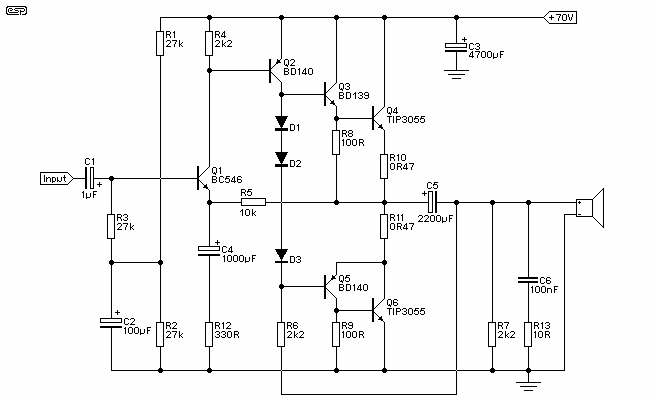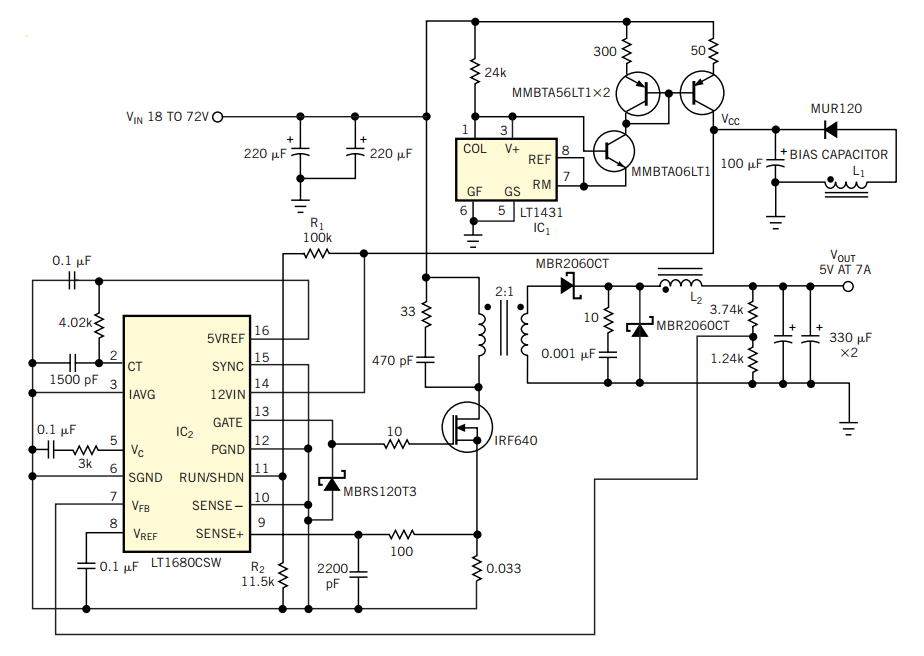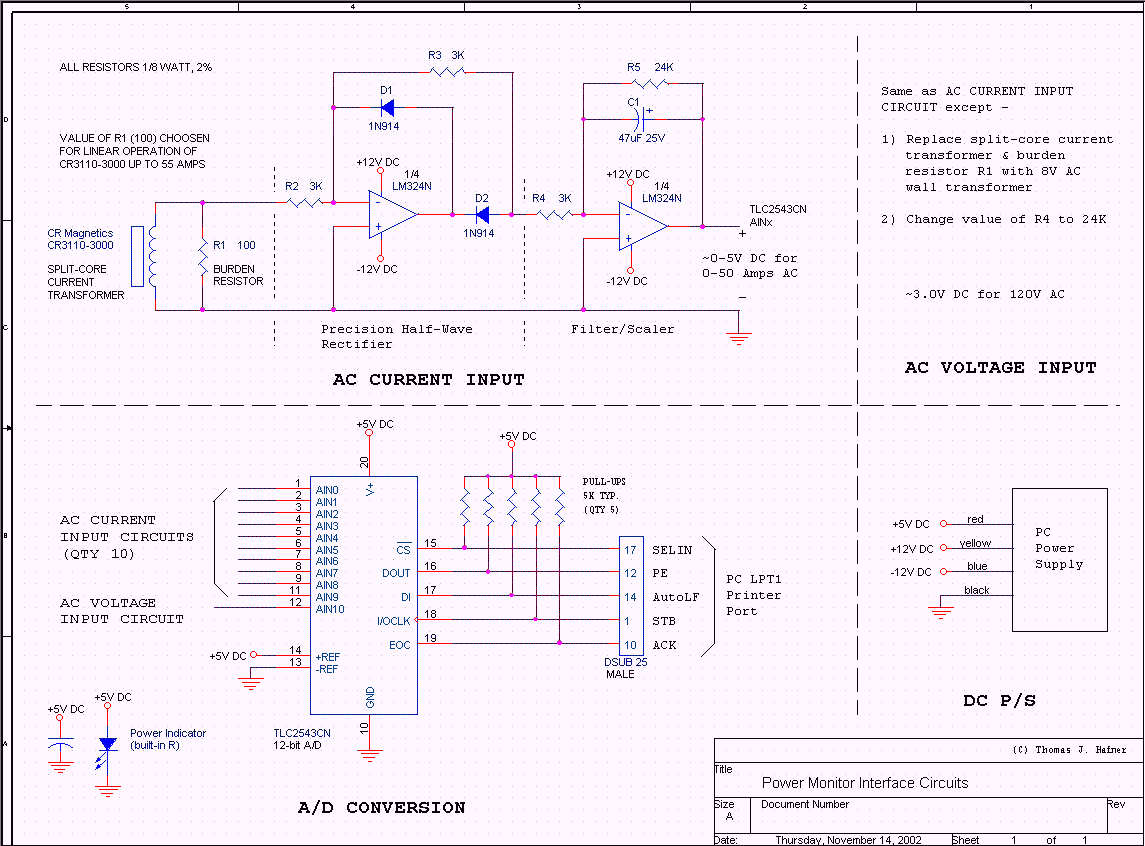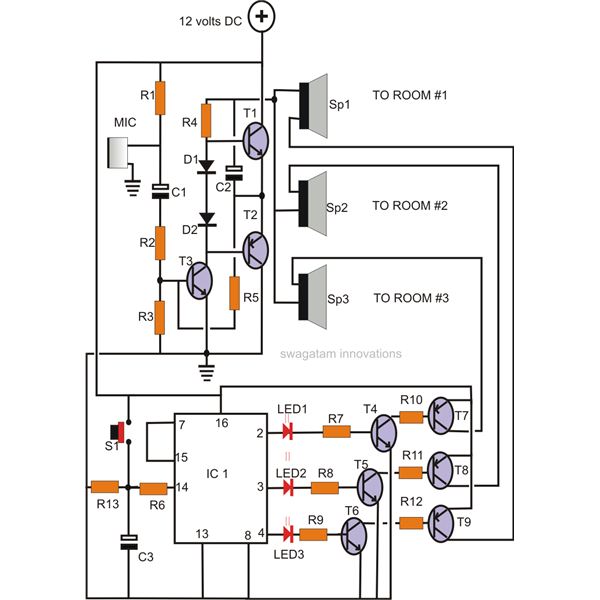
Simple Current Feedback Power Amplifier

Figure 1 shows the circuit. A major change from all of the designs from that era is the speaker coupling capacitor - 1000uF (for a -3dB of 20Hz and a 8 Ohm load) was the most common value. This is too small, and the 2200uF shown is actually marginal. 4700uF would be better, or even more - but that would defeat the purpose, since the amp would no longer be cheap.
Expanding on the original description, the schematic in Figure 1 illustrates an audio amplifier circuit with a speaker coupling capacitor. The speaker coupling capacitor connects the output of the amplifier to the speaker, blocking any DC component of the signal and allowing only the AC component to pass.
In the original designs from the referenced era, a 1000uF capacitor was commonly used. This capacitor value provides a -3dB frequency response at 20Hz for an 8 Ohm load, which is a standard impedance for many speakers. However, this value is considered too small for optimal performance.
The circuit shown in Figure 1 uses a 2200uF capacitor instead. This value is still marginal, as it may not provide the best low-frequency response. A larger capacitor, such as 4700uF, would offer a lower -3dB frequency and hence better bass response.
However, increasing the capacitor value beyond this point may not be cost-effective. Larger capacitors are more expensive and could make the amplifier less affordable, defeating the purpose of designing a cost-effective amplifier. Therefore, a balance must be struck between achieving optimal performance and maintaining affordability. The choice of capacitor value will depend on the specific requirements of the audio system and the budget constraints.Figure 1 shows the circuit. A major change from all of the designs from that era is the speaker coupling capacitor - 1000uF (for a -3dB of 20Hz and a 8 Ohm load) was the most common value. This is too small, and the 2200uF shown is actually marginal. 4700uF would be better, or even more - but that would defeat the purpose, since the amp would no longer be cheap.
🔗 External reference
Expanding on the original description, the schematic in Figure 1 illustrates an audio amplifier circuit with a speaker coupling capacitor. The speaker coupling capacitor connects the output of the amplifier to the speaker, blocking any DC component of the signal and allowing only the AC component to pass.
In the original designs from the referenced era, a 1000uF capacitor was commonly used. This capacitor value provides a -3dB frequency response at 20Hz for an 8 Ohm load, which is a standard impedance for many speakers. However, this value is considered too small for optimal performance.
The circuit shown in Figure 1 uses a 2200uF capacitor instead. This value is still marginal, as it may not provide the best low-frequency response. A larger capacitor, such as 4700uF, would offer a lower -3dB frequency and hence better bass response.
However, increasing the capacitor value beyond this point may not be cost-effective. Larger capacitors are more expensive and could make the amplifier less affordable, defeating the purpose of designing a cost-effective amplifier. Therefore, a balance must be struck between achieving optimal performance and maintaining affordability. The choice of capacitor value will depend on the specific requirements of the audio system and the budget constraints.Figure 1 shows the circuit. A major change from all of the designs from that era is the speaker coupling capacitor - 1000uF (for a -3dB of 20Hz and a 8 Ohm load) was the most common value. This is too small, and the 2200uF shown is actually marginal. 4700uF would be better, or even more - but that would defeat the purpose, since the amp would no longer be cheap.
🔗 External reference





